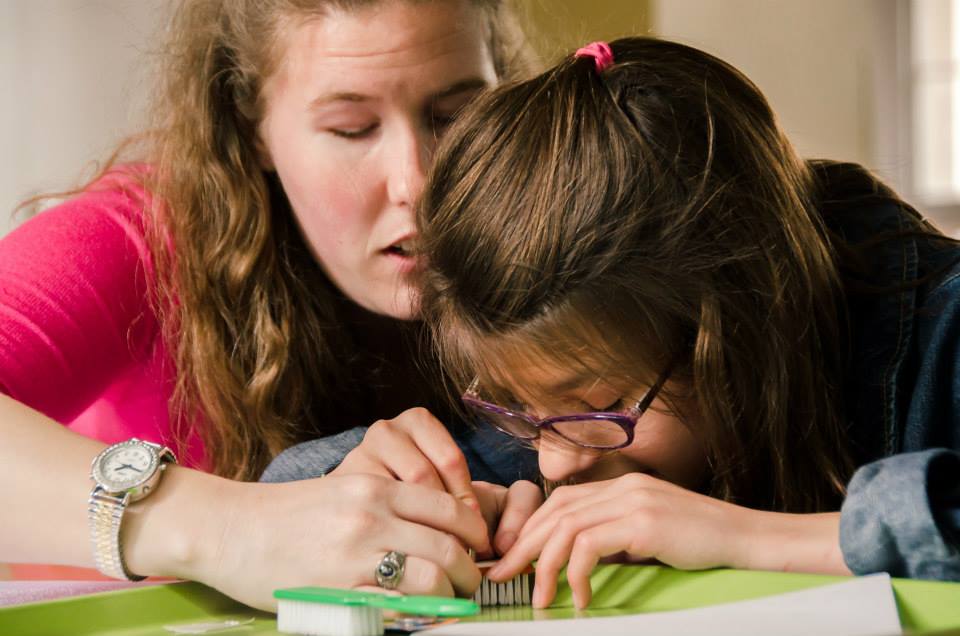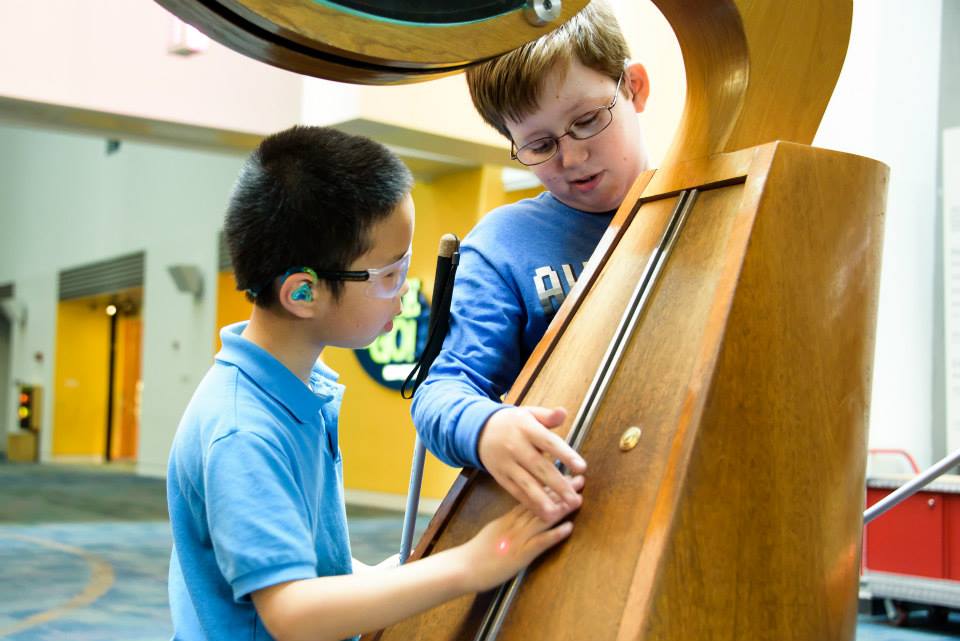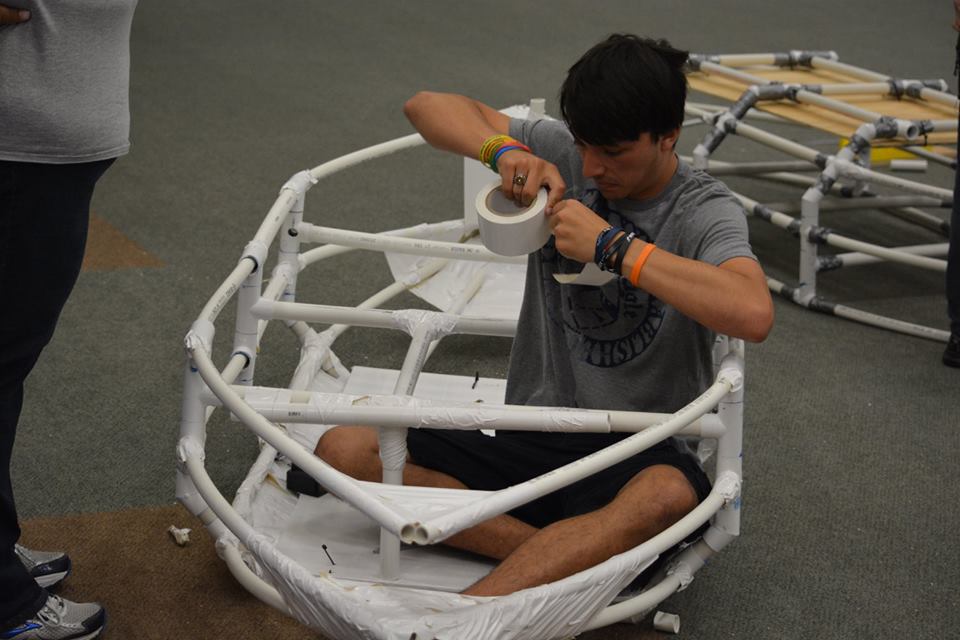Broadening Participation in STEM for Blind Youth
“In the classroom people don’t always ask us to get involved...”
“[My] science teacher didn’t want me to do anything, and I know how I can do these things. I can be one who participates, not the one who takes notes.”
The quotes above were captured from the evaluation of the National Federation of the Blind’s (NFB) National Center for Blind Youth in Science (NCBYS) project funded by an NSF-AISL grant from 2013-2016 (#1322855). They illustrate an all-too-common experience among blind students in classrooms across the country: blind youth are dissuaded from pursuing STEM due to misconceptions and stereotypes.

The NCBYS project partnered with six science centers and museums to introduce students and informal STEM learning professionals to simple adaptations that facilitate a blind person’s exploration of STEM. Partners included the Museum of Science, Boston; Port Discovery Children’s Museum, Baltimore; Center of Science and Industry (COSI), Columbus, Ohio; Science Museum of Minnesota; Arizona Science Center; and the Exploratorium in San Francisco. The evaluation was conducted by the Lifelong Learning Group, and a companion research effort was led by The Ohio State University.
The project collaborated with museum personnel, connecting staff with the local blind community, and implementing a STEM program with blind students and their parents. Parents learned about advocating for accessibility in the classroom, implementing common workarounds to accessibility barriers, and raising expectations for blind children. A teacher component focused on STEM instruction in the classroom, tactile graphics, and other topics.
“[My child] doesn’t have the opportunities to go have fun and do educational things with other kids. She goes to a public school—only gets about half the experience. . . She loves science. Here, it’s hands on, she can experience the activities—she can experience the museum.”
Another component focused on engineering-design concepts for blind high school students. Students worked in teams to solve components of a common problem, utilizing non-visual tools such as talking tape measures, clicking rulers, tactile drafting boards, and talking probes (pH, salinity, etc.).
“Going to college is pretty scary but exciting—this gave me confidence to do hard science.”
“Since this program, I'm more confident I can do activities friends who are fully sighted can do. I have physical and mental capacities I'm willing to do and show.”
Most critical to the development process is engaging end-consumers, in this case blind people, in ongoing collaboration, including face-to-face interactions that humanize issues and provide real-life applications of disability-specific concepts. For this project, not only were the principal investigator and the project director blind, but we established blind volunteer liaisons in each science center’s locale to sustain the relationship, and connected science centers to other local organizations and schools for the blind.
Throughout, we noted the eagerness of science center/museum personnel to work with the blind community to address accessibility issues. Barriers include independent wayfinding, exhibit displays without Braille or other non-visual alternatives, and key elements of exhibits that do not provide non-visual cues. For example, step one in an exhibit may be turning a crank, but step two is a light bulb illuminating without an audio cue or explanation of what has occurred.
Exhibits that permit hands-on interaction provide a more complete experience for the blind learner. Barriers to independent wayfinding were addressed with a tactile and large-print map of centers’ facilities. In one center, staff are working to implement more Braille signage and QR codes to provide additional information. At another partner institution, indoor navigation (beacon) technology is being implemented to address independent wayfinding for blind and sighted visitors alike.

Project Findings from Evaluation
In the summative evaluation,students reported that they believed they improved their STEM skills and content knowledge by engaging with exhibit adaptations implemented by the partner museums and science centers. Several youth also reported that they now believed they could participate in their schools’ science fair— something they previously thought they were excluded from as blind students. After participating in the program, they felt confident in requesting specific adaptations that would facilitate their active engagement.
The formative evaluation was significantly helpful in improving the parent education component of the project. Based on data gathered in early sessions with parents, we placed a greater emphasis in later programs on the specifics of STEM adaptations for blind learners. To enhance and better adapt STEM in later sessions we incorporated parents of blind children who are scientists.
Some primary takeaways from our evaluation:
-
Hands-on experiences in STEM are important for blind youth self-confidence and self-efficacy in STEM
-
Face-to-face interactions with blind people are essential for informal STEM educators and designers to learn how to interact with blind learners and to inform exhibit design and museum layout in ways that address the accessibility issues that impact the blind.

Insights
The NCBYS project’s primary contribution to the informal STEM education field is the demonstration that the most effective solutions to barriers are developed through an active collaboration with those people who are most intimately affected by those barriers and resulting solutions. The fact that this project was led by an organization of blind people cannot be understated. Too often, decisions are made with respect to nonvisual accessibility without the input of blind people, and already scarce resources are diverted to solutions that do not create the most impact. “Nothing about us, without us,” has been an oft-used slogan for marginalized groups, but its applicability to the NCBYS project is noteworthy.

Next Steps
The NFB continues to work with the six science centers, who have helped connect us with other institutions that recognize the benefits that inclusion can bring to their exhibits, volunteers, and community. As a result, we’ve begun collaborating with the National Zoo; the Spy Museum in Washington, DC; and the Smithsonian National Museum of Natural History. We expect to expand the network of science centers and museums working with the blind community with each new connection made.
Other connections, including those between local organizations of the blind and each science center, will receive support from the NFB beyond the project period. As new technologies emerge, and new ways of delivering STEM concepts through science exhibits are developed our hope is that ever-evolving accessibility solutions will go hand in hand.
A CAISE Inquiry Group paper from 2010 explored needs, opportunities and challenges related to designing inclusive informal STEM learning experiences and settings for people with disabilities of all kinds, including the blind and visually impaired.